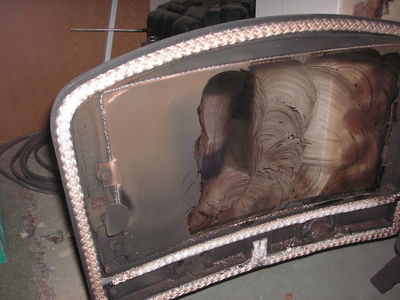Glycerine logs
Glycerine logs, 'Glyc logs' or 'Glogs' are fuel logs made of biodiesel waste and a suitable flammable absorbent material which can be burnt on a solid fuel appliance to produce heat.
Contents
Mixing the materials
Glycerine
The material we commonly refer to as 'Glycerine' or 'Glyc' is actually a varied mixture of Glycerine, Methanol, Catalyst from the reaction, Water and other impurities. Depending on the catalyst used and the processing method, the Glycerine may stay liquid for a long time or may set solid within hours of draining from the processor. Virtually all biodiesel recipes and processes will produce Glycerine that can be used for logs. The only method known to cause issues is the use of a 7% water 'prewash' before the Glycerine is drained. This excess water content in the Glycerine tends to reduce their flammability considerably. Clearly, the Glycerine needs to be liquid in order to mix thoroughly with, and be absorbed by, the absorbent.
Absorbent
There are several absorbent materials which can be, and have been, used to make logs. Shredded paper and sawdust are probably the two most commonly used examples.
When using sawdust, finer is definitely better. The dust produced from furniture workshops and those places which cut boards so size is considerably more absorbent and will hold far more Glycerine per log than chainsaw chippings or wood shavings. Whatever absorbent is used, it is important that the material is dry. If it is wet then that water will be trapped in the logs causing the same combustion problems as a water prewash.
Mixing
What to mould them in
Combustion characteristics


